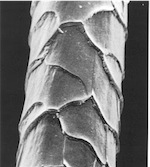In a research project done recently by Southern Company on fifty heat pump installations, they identified that two biggest potential problems with heat pumps are limited airflow and dirty air filters. Improper heater placement can limit intake or discharge airflow. Dirty filter also translates to poor airflow and lower COP. Cleaning an air filter sounds simple, but it can be a real problem if the filter is hard to reach.
A condensing heater works by capturing the combustion gases to further heat the water Instead of venting them directly outside. Condensing heaters come in tank or tankless. The concept has been around well over a hundred years although not by the present name. There were contact and non-contact tankless heaters. Contact heaters actually mingled together flame (or hot products of combustion) and the water to be heated. Old heaters claimed to get up to 92% of the heat! These were used for tub or sink water heating where water simply flowed unpressurized through the heater and out to be used. Non-contact heaters had to be somewhat less efficient as water was heated through metal. I like these old heaters because they were simple, and worked for years, efficiently. They relied on things like gravity, water pressure and the properties of materials to work. These are pretty reliable forces!
New heaters clearly can perform even better than old ones, but maintenance is needed to hold onto that high efficiency. Water quality plays into it in a big way. About 85% of the US has hard water. Even a thin film of scale on a heat exchanger can both cut efficiency and cause overheating to shorten the heat exchanger’s life. Tank type and tankless water heaters react differently to scale formation. Generally it is more of a problem in tankless heaters. The higher the rate of heat transfer, the more a concern hard water becomes. One just needs to read the warranties carefully!
Condensing heaters can be installed in a lot of places, but a good venting system is required to keep fumes out of living area and people. This may cut down the number of possible locations. Also with fan assisted venting, noise is a real concern. The “Vent Attenuation Assembly” (e.g.: Vertex) is a PVC device that looks and acts like a muffler, to quiet down fan noise. It goes in the exhaust vent and has a condensate drain port.
Condensing heaters are NOT direct replacements for conventional heaters. Good gas line up-sizing, surge protected power, condensate neutralization and disposal, dedicated plastic venting and possibly air supply for combustion are all things yesterday’s heater didn’t need.
Avoid installing heaters where service will be difficult, or where they will be exposed to extremes in temperature, moisture or dust. Get a unit with simple operational procedures but do learn and perform the required maintenance, otherwise the new high tech heaters can wind up costing more, both in terms of money and aggravation than conventional heaters.
Larry Weingarten has worked with hot water heating systems for decades and is a collector of antique water heaters. In recent years he spends his time on retrofiting homes for energy efficiency. Larry can be reached via the Green Remodel Forum administrtor (admin@greenremodelforum.com).
Larry made a video program to show how you can work on your hot water heater to make it last forever, well, almost forever. A preview is here.







